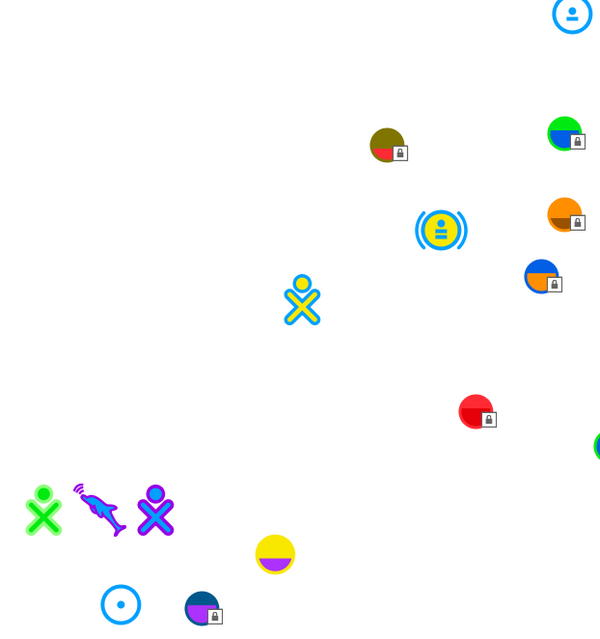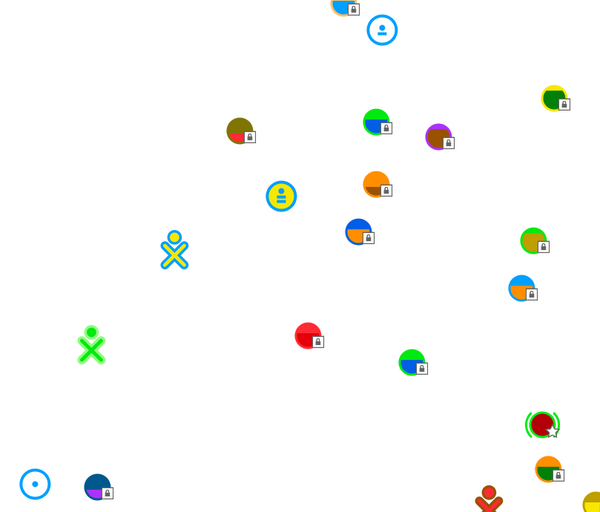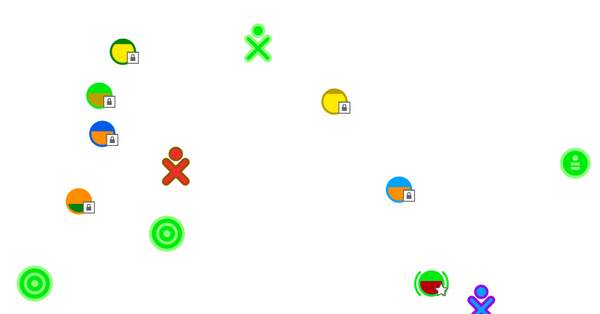Difference between revisions of "Features/Ad hoc Networking"
(Created page with '<noinclude>{{TOCright}} SugarAdhocNetworks </noinclude> == Summary == This features removes the need for the Presence Service, meaning that activities and t...') |
|||
| Line 7: | Line 7: | ||
== Owner == | == Owner == | ||
| − | * Name: [[User: | + | * Name: [[User:Erikos| Simon Schampijer]] |
| − | * Email: | + | * Email: simon AT sugarlabs DOT org |
== Current status == | == Current status == | ||
* Targeted release: 0.90 | * Targeted release: 0.90 | ||
| − | * Last updated: | + | * Last updated: 13/08/2010 |
* Percentage of completion: 100% | * Percentage of completion: 100% | ||
== Detailed Description == | == Detailed Description == | ||
| − | The | + | The Feature will add three default Ad-hoc networks, for channel 1, 6 and 11. They will be represented with designated icons in the neighborhood view. This will mimic the mesh behavior on devices where mesh hardware is not available and make the "under a tree"-scenario possible in those cases. If Sugar sees no "known" network (the learner has not been connected to an currently available Access Point before) when it starts, it does autoconnect to an Ad-hoc network. First we try if there is an Ad-hoc network that is used by other learners in the area, if not we default to channel 1. |
| − | |||
| − | This | ||
| − | |||
| − | |||
== Benefit to Sugar == | == Benefit to Sugar == | ||
| − | + | The Feature will allow small groups of learners to collaborate without the need of an infrastructure, the so called "under a tree"-scenario more easily. In previous Sugar releases the learner could create an Ad-hoc network by using an option in the wireless device palette. This representation will be more accessible to the learners. | |
| − | + | == Scope == | |
| − | |||
| − | |||
| − | |||
| − | |||
| − | |||
| − | == | + | ==UI Design== |
| − | |||
| − | |||
| − | |||
| − | |||
| − | |||
== How To Test == | == How To Test == | ||
| Line 51: | Line 37: | ||
== Contingency Plan == | == Contingency Plan == | ||
| − | None necessary, revert to previous release behaviour. I will be able to invest | + | None necessary, revert to previous release behaviour. I will be able to invest time until the 0.90 release to fix any bugs that may be introduced by the Feature. |
== Documentation == | == Documentation == | ||
| − | |||
| − | |||
| − | |||
| − | |||
== Release Notes == | == Release Notes == | ||
Revision as of 03:29, 13 August 2010
Summary
This features removes the need for the Presence Service, meaning that activities and the Shell need to interact directly with non-Sugar-specific services such as Telepathy.
Owner
- Name: Simon Schampijer
- Email: simon AT sugarlabs DOT org
Current status
- Targeted release: 0.90
- Last updated: 13/08/2010
- Percentage of completion: 100%
Detailed Description
The Feature will add three default Ad-hoc networks, for channel 1, 6 and 11. They will be represented with designated icons in the neighborhood view. This will mimic the mesh behavior on devices where mesh hardware is not available and make the "under a tree"-scenario possible in those cases. If Sugar sees no "known" network (the learner has not been connected to an currently available Access Point before) when it starts, it does autoconnect to an Ad-hoc network. First we try if there is an Ad-hoc network that is used by other learners in the area, if not we default to channel 1.
Benefit to Sugar
The Feature will allow small groups of learners to collaborate without the need of an infrastructure, the so called "under a tree"-scenario more easily. In previous Sugar releases the learner could create an Ad-hoc network by using an option in the wireless device palette. This representation will be more accessible to the learners.
Scope
UI Design
How To Test
Flash at least two XOs with the latest version of Sugar and the latest version of NetworkManager.
Autoconnect
- connect to an Access Point on one machine and restart the machine
---> the machine does autoconnect with the AP
- start the machine without having connected to an AP before
---> the machine should autoconnect to ad hoc network 1
- start machine A and connect to the ad hoc network 6, start machine B without having been connected to an AP before
---> machine B should autoconnect to the ad hoc network 6
Connect both machines to the same channel
---> the buddies should be present on the neighborhood view of the other machine
---> the shared activity is displayed correctly in the Neighborhod view and the sharing does work
Members
The ad hoc icons in the Neighborhood view do indicate whether the network has members or not, whether it is used by more than one person. It does not indicate the number of people that are connected though. If the fill color of the ad hoc icon is set then there is at least one person listening.
- On machine A connect to an ad hoc network. Start machine B which has been connected to an access point before.
---> On machine B it should automatically connect to the access point and the icon representing the ad hoc network machine A is connected to should be colored, the fill color is set.
- Shut down machine A.
---> after 10-15 minutes the icon representing the ad hoc network machine A is connected to should be uncolored, the fill color is NOT set. This is indicates that there are no members on the network.
Collaborate between XO-1.0 and XO-1.5 without infrastructure
The XO-1.5 and XO-1.0 will see ad hoc networks in his Neighborhood view, so it the XO-1.0 can connect to an ad hoc network that has been created by a learner on the XO-1.5.
User Experience
No changes.
Dependencies
Will add a dependency on telepathy-mission-control and will need updated versions of telepathy-gabble and telepathy-salut.
Contingency Plan
None necessary, revert to previous release behaviour. I will be able to invest time until the 0.90 release to fix any bugs that may be introduced by the Feature.
Documentation
Release Notes
TBW


